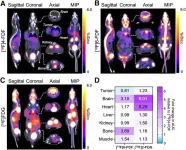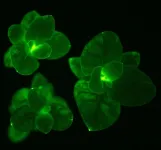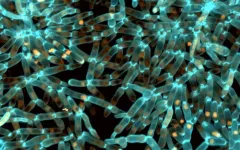(Press-News.org) America’s shortage of primary care doctors and nurse practitioners has a downstream effect in the nation’s operating rooms, a new study finds.
And patients suffer as a result.
In all, people living in areas with the most severe shortages of primary care providers have a much higher risk of having emergency surgery, rather than a scheduled operation,
compared with people with the same condition who live in areas with less-dire primary care shortages.Those living in the areas with the lowest availability of primary care providers also have a higher chance of suffering complications after surgery, and needing to go back to the hospital after they’ve left it, according to the findings in the journal Health Affairs from a team at Michigan Medicine, the University of Michigan’s academic medical center.
The team looked at data for people with traditional Medicare coverage who had operations for conditions where timing can really matter: colectomy to remove a cancerous area of the colon, repair of a hernia, and repair of aneurysms in wall of the aorta, the body’s largest blood vessel.
They focused only on people living in areas classified by the federal government as having a shortage of primary care providers. They then divided these areas into five levels of shortage.
In all, nearly 38% of the patients living in the more-severe shortage areas had their operations on an emergency basis, compared with 30% of those living in the areas with the least-severe shortages.
Those living in areas with more severe shortages also had a higher risk of serious complications from surgery (15% vs. nearly 12%), and those living in the most severe shortage areas also had a higher risk of readmission to the hospital (nearly 16% vs. 13.5%).
Lead author Sara Schaefer, M.D., said her experience growing up in Idaho and going to medical school at the University of Washington -- where she learned alongside primary care providers serving huge rural areas -- informed her interest in the topic. She is now a resident in the U-M Department of Surgery and a healthcare administration fellow at the Center for Healthcare Outcomes and Policy, and notes that she and her colleagues operate on many patients who travel from rural areas of Michigan, especially for emergency operations.
“The primary care provider shortage is a key piece in accessing care, because if you have no access to primary care, that impacts your access to specialists,” she said. “A scheduled surgical case is always better than an emergency case in outcomes, costs and impact on the patient’s life, so the role of the primary care provider in identifying a potential issue, and referring a patient for diagnostic imaging and surgery, can make a major difference in addressing an urgent problem before it becomes an emergency.”
While she and her colleagues on the study – including surgery assistant professor Andrew Ibrahim, M.D., M.Sc. – did not show a difference in patients’ risk of death based on severity of primary care shortage, they did show that mortality risk was lower for those living in non-shortage areas compared with shortage areas.
The results of the study, the authors say, should underscore the importance of efforts to increase the supply of primary care providers and to attract them to practice in underserved areas.
This includes both rural and urban primary care shortage areas; the study found that 58% of the census tracts classified as having a primary care shortage of any level were rural.
Loan forgiveness and restructuring programs, to alleviate the education-related debt of physicians and other providers, are a key tool in this effort, Schaefer notes. Encouraging more providers to choose primary care careers, rather than specializing, and incentivizing them to practice in areas of shortage, could ultimately mean better outcomes when people living in those areas need time-sensitive operations, even if they travel many miles to get to the operating room.
The study does not include data on people covered by Medicaid, VA or private insurance, but Schaefer hopes other researchers will attempt to duplicate the findings in those populations.
In the meantime, she says, the message to people living in shortage areas is to seek out a primary care provider to have as a regular source of care, even if getting an appointment takes a while because of shortages. And, she says, don’t ignore new symptoms; instead, know how to escalate a concern with your regular provider.
For surgeons, she said, the realization that some of their patients having urgent or emergency surgery might be doing so because they don’t have access to a regular primary care provider is an important one.
“Use the post-surgery hospitalization as a time to intervene and facilitate contact with a primary care provider who can assist with recovery and with other health issues the patient may be facing,” she said. “The role of the primary care doctor as a partner in care of our surgical patients cannot be overstated.”
In addition to Schaefer and Ibrahim, who is a member of the U-M Institute for Healthcare Policy and Innovation, the authors of the study are CHOP fellow and Surgery resident Shukri H. A. Dualeh, M.D., CHOP statistician Nicholas Kunnath, M.S., and John W. Scott, M.D., M.P.H., formerly of U-M and now at the University of Washington.
The study was funded by the National Institutes of Health (CA236621) and the Agency for Healthcare Research and Quality
Higher Rates Of Emergency Surgery, Serious Complications, And Readmissions In Primary Care Shortage Areas, 2015–19, Health Affairs, DOI:10.1377/hlthaff.2023.00843
END
Primary care scarcity linked to more surgical emergencies & problems
Worse outcomes for patients living in rural and urban areas with few primary care providers suggests need to boost efforts to increase training and geographic distribution
2024-03-08
ELSE PRESS RELEASES FROM THIS DATE:
Novel PET tracer maps fructose metabolism to identify cardiac and neural disorders
2024-03-08
Reston, VA—A new PET radiotracer can differentiate diseased tissues from healthy tissues based on fructose metabolism, according to new research published in the March issue of The Journal of Nuclear Medicine. Fructose metabolism—or fructolysis—is indicative of a variety of diseases, and by noninvasively mapping fructolysis physicians can more accurately detect diseases and treat them earlier.
Glucose is used as the primary biochemical fuel throughout the body, powering key processes like tissue function, growth, and repair. Glucose is also consumed extensively during inflammation and cancer growth and can be visualized with PET scans. Evidence continues to mount that ...
Pushing the boundary on ultralow frequency gravitational waves
2024-03-08
A team of physicists has developed a method to detect gravity waves with such low frequencies that they could unlock the secrets behind the early phases of mergers between supermassive black holes, the heaviest objects in the universe.
The method can detect gravitational waves that oscillate just once every thousand years, 100 times slower than any previously measured gravitational waves.
“These are waves reaching us from the farthest corners of the universe, capable of affecting how light travels,” said Jeff Dror, Ph.D., an assistant ...
New study reveals molecular fingerprint of biological aging
2024-03-08
University of Pittsburgh researchers have uncovered blood-based markers linked with healthy and rapid aging, allowing them to predict a person’s biological age — how fast a person’s cells and organs age regardless of their birthdate.
The new research, published in Aging Cell, points to pathways and compounds that may underlie biological age, shedding light on why people age differently and suggesting novel targets for interventions that could slow aging and promote healthspan, the length of time a person is healthy.
“Age is more than just a number,” said senior author Aditi Gurkar, Ph.D., assistant professor of geriatric medicine at ...
Glowing flowers illuminate homes and gardens with organic light
2024-03-08
Sun Valley, ID - March 8, 2024 – Recent discoveries published in Science Advances have unveiled a native plant gene that enables researchers to more effortlessly harness the captivating glow of bioluminescent plants. This gene, which varies across different plant species, allows for the redirection of living energy into organic light. The advancement reveals the intricate inner rhythms and dynamics of plants through continuously evolving luminosity, offering a natural source of illumination for homes, gardens, and beyond.
The study received support from Light Bio, a pioneer in the development of bioluminescent plants. Light Bio is dedicated to fostering ...
Research sheds light on new strategy to treat infertility
2024-03-08
New research from Oregon Health & Science University describes the science behind a promising technique to treat infertility by turning a skin cell into an egg that is capable of producing viable embryos.
Researchers at OHSU documented in vitro gametogenesis, or IVG, in a mouse model through the preliminary steps of a technique that relies upon transferring the nucleus of a skin cell into a donated egg whose nucleus has been removed. Experimenting in mice, researchers coaxed the skin cell’s nucleus into reducing its chromosomes by half, so that it could then be fertilized ...
The brain builds emotions regardless of the senses
2024-03-08
How much do our emotions depend on our senses? Does our brain and body react in the same way when we hear a fearful scream, see an eerie shadow, or smell a sinister odor? And does hearing an upbeat music or seeing a colorful landascape bring the same joy?
In an innovative study published in Science Advances, researchers have unveiled new insights into the intricate relationship between emotion and perception.
Led by a team of Italian neuroscientists from the IMT School for Advanced Studies Lucca, and conducted in collaboration with the University of Turin, the research project investigates whether the brain employs sensory-specific or abstract codes to construct ...
Harnessing the mechanisms of fungal bioluminescence to confer autonomous luminescence in plants and animal cells
2024-03-08
In a striking new study published today in Science Advances, a team of synthetic biologists led by Karen Sarkisyan at the MRC Laboratory of Medical Sciences, have reported the discovery of multiple plant enzymes – hispidin synthases – that can perform the most complex reaction of the bioluminescence pathway. This discovery is a significant milestone towards figuring out whether plants can natively produce all the molecules required for light emission. It also means that the glow of bioluminescent plants can now be more closely aligned with their internal biology.
The technology reported in the paper is a hybrid ...
New study discovers how altered protein folding drives multicellular evolution
2024-03-08
Researchers have discovered a mechanism steering the evolution of multicellular life. They identified how altered protein folding drives multicellular evolution.
In a new study led by researchers from the University of Helsinki and the Georgia Institute of Technology, scientists turned to a tool called experimental evolution. In the ongoing Multicellularity Long Term Evolution Experiment (MuLTEE), laboratory yeast are evolving novel multicellular functions, enabling researchers to investigate how they arise.
The study puts the spotlight on the regulation of proteins in understanding evolution.
"By demonstrating the effect of protein-level ...
Socially prescribed creative play boosts parents’ and children’s wellbeing
2024-03-08
University of Leeds news
For immediate release
Socially prescribed creative play boosts parents’ and children’s wellbeing
Socially prescribed creative play helps children and their parents develop new skills and promotes wellbeing, a new study has found.
The University of Leeds-led study evaluated a five-week programme of arts-based play, including singing and music-making, for families of children aged up to three. It found that parents benefited from developing social networks and sharing experiences with each other, as well as learning creative approaches to parenting. ...
Researchers’ approach may protect quantum computers from attacks
2024-03-08
Quantum computers, which can solve several complex problems exponentially faster than classical computers, are expected to improve artificial intelligence (AI) applications deployed in devices like autonomous vehicles; however, just like their predecessors, quantum computers are vulnerable to adversarial attacks.
A team of University of Texas at Dallas researchers and an industry collaborator have developed an approach to give quantum computers an extra layer of protection against such attacks. Their solution, Quantum Noise Injection for Adversarial Defense (QNAD), counteracts the impact of ...
LAST 30 PRESS RELEASES:
Mount Sinai Health system receives $8.5 million NIH grant renewal to advance research on long-term outcomes in children with congenital heart disease
Researchers develop treatment for advanced prostate cancer that could eliminate severe side effects
Keck Medicine of USC names Christian Pass chief financial officer
Inflatable fabric robotic arm picks apples
MD Anderson and SOPHiA GENETICS announce strategic collaboration to accelerate AI-driven precision oncology
Oil residues can travel over 5,000 miles on ocean debris, study finds
Korea University researchers discover that cholesterol-lowering drug can overcome chemotherapy resistance in triple-negative breast cancer
Ushikuvirus: A newly discovered giant virus may offer clues to the origin of life
Boosting the cell’s own cleanup
Movement matters: Light activity led to better survival in diabetes, heart, kidney disease
Method developed to identify best treatment combinations for glioblastoma based on unique cellular targets
Self-guided behavioral app helps children with epilepsy sleep earlier
Higher consumption of food preservatives is associated with an increased risk of type 2 diabetes
NTU Singapore-led team captures first-ever ‘twitch’ of the eye’s night-vision cells as they detect light, paving the way for earlier detection of blindness-causing diseases
Global aviation emissions could be halved through maximising efficiency gains, new study shows
Fewer layovers, better-connected airports, more firm growth
Exposure to natural light improves metabolic health
As we age, immune cells protect the spinal cord
New expert guidance urges caution before surgery for patients with treatment-resistant constipation
Solar hydrogen can now be produced efficiently without the scarce metal platinum
Sleeping in on weekends may help boost teens’ mental health
Study: Teens use cellphones for an hour a day at school
After more than two years of war, Palestinian children are hungry, denied education and “like the living dead”
The untold story of life with Prader-Willi syndrome - according to the siblings who live it
How the parasite that ‘gave up sex’ found more hosts – and why its victory won’t last
When is it time to jump? The boiling frog problem of AI use in physics education
Twitter data reveals partisan divide in understanding why pollen season's getting worse
AI is quick but risky for updating old software
Revolutionizing biosecurity: new multi-omics framework to transform invasive species management
From ancient herb to modern medicine: new review unveils the multi-targeted healing potential of Borago officinalis
[Press-News.org] Primary care scarcity linked to more surgical emergencies & problemsWorse outcomes for patients living in rural and urban areas with few primary care providers suggests need to boost efforts to increase training and geographic distribution





